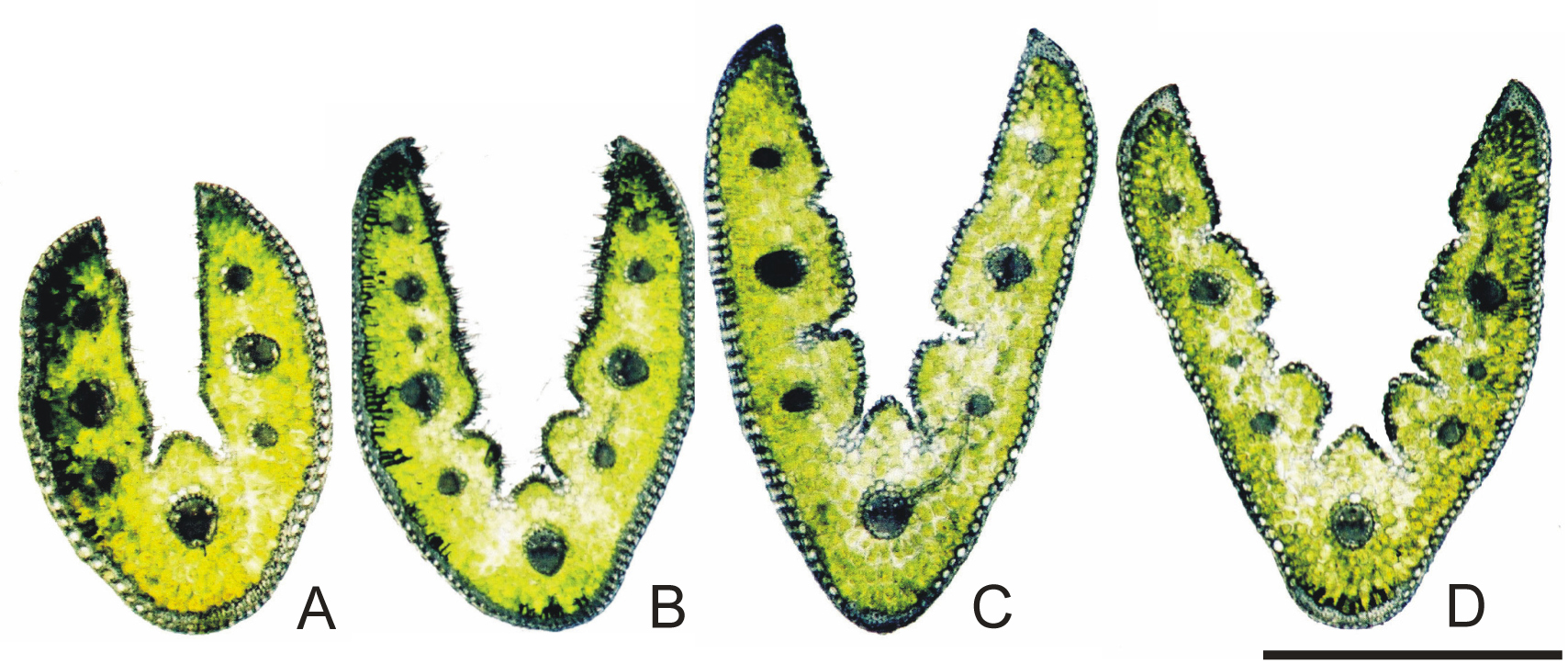Morpho-anatomical structure of the leaves of Festuca trachyphylla (Hack.) Krajina in the ecological aspect
Abstract
Festuca trachyphylla (Hack.) Krajina is a morphologically variable species common in warm and dry habitats in various communities: xerothermic grasslands, dry meadows, sand dunes, scrub and well-lighted forest. The aim of this study was to determine the limits of morphological and anatomical trait variability of F. trachyphylla leaves. The study was conducted in 24 sub-populations (N-432 individuals) in the Lublin Upland, southeastern Poland. Plants in two localities were investigated: in calcium carbonate-rich xerothermic grasslands and on sand dunes. Variability of the F. trachyphylla leaf blades was demonstrated to be dependent on the habitat type. The following morphological and anatomical traits: the length of the leaf, width of the cauline leaf, number of ribs in the leaf, length of the cauline leaf, length of hair in the leaf, colour of the leaf, hairiness of the upper part leaf, cross-section of the leaf, and distribution of the sclerenchymatous tissue in the leaf blade exhibited high variability.
References
Dengler J. 1996. Anmerkungen zur Taxonomie und Bestimmung von Schaf-Schwingeln i. w. S. (Festuca ovina agg.) in Deutschland mit besonderer Berücksichtigung Schleswig-Holsteins. Kieler Notizen zur Pflanzenkunde in Schleswig-Holstein und Hamburg 24: 1–29.
Dengler J. 1998. Neues von den schmalblättrigen Schwingel-Sippen (Festuca ovina agg. und F. rubra agg.) in Deutschland mit besonderer Berücksichtigung von Schleswig-Holstein und Hamburg. Kieler Notizen zur Pflanzenkunde in Schleswig-Holstein und Hamburg 25/26: 6–32.
Falkowski M. 1982. Trawy polskie. PWRiL, Warszawa.
Fijałkowski D. & Warmińska B. 1972. Zmienność kostrzew kępowych (Festuca sp.) województwa lubelskiego. Ann. Univ. Mariae Curie-Skłodowska, sec. C. 27(18): 189–198.
Hackel E. 1882. Monographia Festucarum Europaearum. Kassel, Berlin.
Łuszczyńska B. 2001. Distribution of Festuca ovina group (Poaceae) species in the xerothermic communities of the Pińczów Hump and adjacent areas (southern Poland). In: Frey L. (ed.) Studies on grasses in Poland: 201–209. W. Szafer Institute of Botany, Polish Academy of Sciences, Kraków.
Markgraf-Dannenberg I. 1980. Festuca L. In: Tutin T.G., Heywood V.H., Burges N.A., Moore D.M., Valentine D.H., Walters S.M. & Webb D.A. (eds). Flora Europaea 5: 125–153. Cambridge University Press, Cambridge.
Matuszkiewicz W. 2007. Przewodnik do oznaczania zbiorowisk roślinnych Polski. Wydawnictwo Naukowe PWN, Warszawa.
Medwecka-Kornaś A. & Kornaś J. 1977. Zespoły stepów i suchych muraw. In: Szafer W. & Zarzycki K. (eds). Szata roślinna Polski: 352–366. PWN, Warszawa.
Pawlus M. 1983 (1985). Systematyka i rozmieszczenie gatunków grupy Festuca ovina L. w Polsce. Taxonomy and distribution of the Festuca ovina group in Poland. Fragm. Flor. Geobot. 29(2): 219–295.
Szafer W., Kulczyński S. & Pawłowski B. 1986. Rośliny polskie. Opisy i klucze do oznaczania wszystkich gatunków roślin naczyniowych rosnących w Polsce bądź dziko, bądź też zdziczałych lub częściej hodowlanych. PWN, Warszawa.
Szczęśniak E. 2005. Species of Festuca ovina group (Poaceae) on the serpentine rocks in the Sudety Foreland. Acta Bot. Siles. 2: 121–129.
Wilkinson M.J. & Stace C.A. 1991. A new taxonomic treatment of Festuca ovina L. aggregate (Poaceae) in the British Isles. Bot. J. Linn. Soc. 106: 347–397.


This work is licensed under a Creative Commons Attribution-NonCommercial-NoDerivatives 4.0 International License.
The journal is licensed by Creative Commons under BY-NC-ND license. You are welcome and free to share (copy and redistribute the material in any medium or format) all the published materials. You may not use the material for commercial purposes. You must give appropriate credit to all published materials.
The journal allow the author(s) to hold the copyrights and to retain publishing rights without any restrictions. This is also indicated at the bottom of each article.





